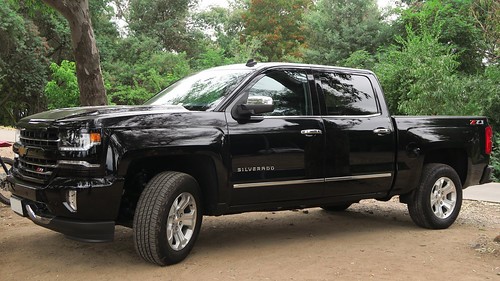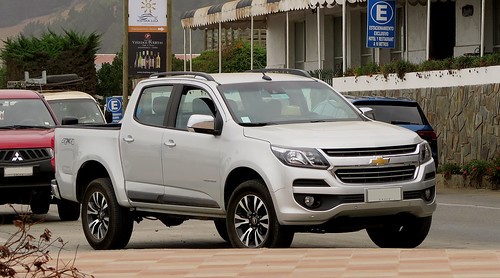From the Chesapeake Bay to Loch Raven Reservoir, there are many great boating destinations within close proximity to White Marsh, Maryland. If you own a large SUV or pickup truck from Chevrolet, you should have no trouble transporting your boat to your favorite boating spot. However, driving with a boat trailer can be challenging and potentially dangerous if you fail to take the necessary precautions. Follow these helpful tips to properly and safely tow a boat with your Chevy:
STAY WITHIN YOUR CHEVY’S TOWING CAPACITY

Before you start driving with a boat in tow, you have to make sure your Chevrolet is capable of handling the weight of your boat and trailer. If you own a full-size SUV or pickup truck, you’ll be able to tow larger and heavier boats such as a fiberglass fishing boat, deck boat, bowrider, pontoon boat, wake boat, and a medium-sized or large sailboat. A compact or mid-size SUV can only handle smaller vessels such as an aluminum fishing boat, skiff, or a small sailboat. Below are the tow ratings of a few Chevrolet models:
- 2021 Chevrolet Equinox: 1,500 pounds.
- 2021 Chevrolet Traverse: 5,000 pounds.
- 2021 Chevrolet Colorado: 7,700 pounds.
- 2021 Chevrolet Suburban: 8,300 pounds.
- 2021 Chevrolet Tahoe: 8,400 pounds.
- 2021 Chevrolet Silverado 1500: 13,300 pounds.
- 2021 Chevrolet Silverado 3500: 36,000 pounds.
MAKE SURE YOU DON’T OVERLOAD YOUR VEHICLE
Your Chevrolet SUV or pickup truck has a certification or tire label on the driver’s side door or B-pillar that shows its gross vehicle weight rating. This rating is the maximum operating weight of your Chevy, which includes the weight of the vehicle itself, the weight of the people and cargo it’s carrying, and the tongue weight of your trailer. Exceeding the gross vehicle weight limit can result in dangerous handling and possibly cause damage to your vehicle.
DETERMINE THE RIGHT TONGUE WEIGHT
Tongue weight refers to the amount of downward force the trailer’s tongue exerts on the hitch. Usually, it’s between 10 and 15 percent of the overall weight of your loaded trailer. However, some boat trailers may have a tongue weight that doesn’t fall within this range. Check your owner’s manual to find out the appropriate tongue weight for your particular Chevy model. Proper tongue load is important because it can help prevent trailer sway.
PRACTICE DRIVING WITH A BOAT TRAILER

To safely tow a boat, you need to develop a special set of driving skills. If you have little to no trailering experience, you should practice your towing skills before you start driving with your boat trailer.
Hitch up your trailer with your boat on it and drive to an empty parking lot or stretch of road. Then, practice accelerating, steering, stopping, backing up, and using the side mirrors so that you can get a feel for driving with a trailer. Pay attention to how your trailer responds to different movements.
When you’re finally ready to hit the road, you have to keep certain precautions in mind to ensure a smooth and safe trip. The following are some useful tips for driving with a boat trailer:
- Stay at least four seconds behind the vehicle in front of you because you’ll need more time to stop when you’re trailering.
- Avoid hard acceleration as it can increase the likelihood of your boat sliding off the trailer or the trailer hitch breaking.
- Make wide turns to prevent your trailer tire from hitting the curb.
- Change lanes slowly as you may not be able to see vehicles directly behind your trailer.
- If you feel that your trailer is swaying, pull over immediately and redistribute weight to make sure the load is properly balanced.
- When you’re backing up, remember that turning left will make your trailer go right and vice versa.
LEARN HOW TO LAUNCH YOUR BOAT
Backing down the boat ramp is one of the biggest challenges in boat trailering. To make sure your Chevrolet vehicle is in alignment with your trailer, you need to pull forward far enough before you start reversing. While you’re backing up, make small incremental steering corrections to properly position your vehicle on the ramp.
Different boat trailers and ramps may require different launching techniques. In some cases, you may have to back down the ramp until your rear tires are in the water. In others, you won’t need to back your boat nearly as far. However, in either situation, you should stop once the back of your boat begins to float. Then, you can proceed to release the bow eye and the motor and tug your boat off the trailer.
PROPERLY LOAD YOUR BOAT BACK ONTO THE TRAILER
When you’re done using your boat for the day, it’s time to load it back onto the trailer. The trickiest part of this task is submerging the trailer to the right depth. In most cases, you should be able to load your boat with about two-thirds of your trailer in the water.
Whether you’re driving your boat or letting it float onto the trailer, aim it down the centerline. After your boat has come to a stop, attach the winch cable or strap to the bow eye and make sure the anti-reverse ratchet on it is engaged. Then, crank the ratchet up until the bow rests firmly on the bow stop. After pulling your boat up the ramp, make sure it’s properly centered on the trailer.
CONSIDER GETTING SPECIALIZED TOWING FEATURES
Chevrolet trucks and large SUVs offer an array of standard and optional features that can make towing easier and safer. For instance, the Chevy Silverado 1500 comes standard with a trailering hitch platform, a four-pin connector, a 2-inch receiver, a seven-wire harness, and an automatic locking rear differential. You can further enhance your truck’s towing prowess by adding the available Max Trailering Package that includes a handling/trailering suspension package, upgraded cooling radiator, specially tuned shocks, heavy-duty rear springs, a 9.76-inch rear axle, and an integrated trailer brake controller.
If you need more Chevy boat trailering tips, don’t hesitate to speak with the helpful staff at Koons White Marsh Chevrolet. Feel free to contact us anytime.
Image via Flickr by RL GNZLZ



